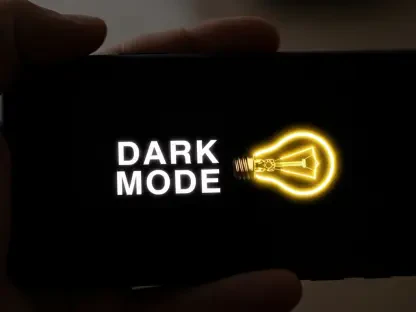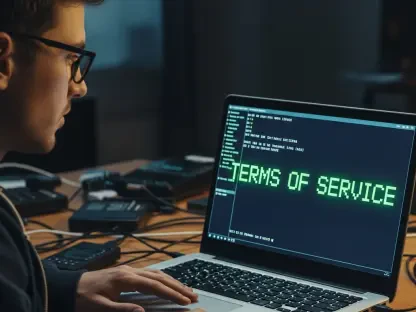Anand Naidu is our resident Development expert, proficient in both frontend and backend development, known for providing deep insights into various coding languages. Today, Anand will share his knowledge about Vibe Coding, an innovative approach introduced by IBM that’s transforming the way we build software.
Can you describe the concept of Vibe Coding and how it differs from traditional coding practices?
Vibe Coding fundamentally shifts the focus from traditional code reviews, which often become battlegrounds for egos, to a more collaborative and intuitive process. Instead of dissecting code line by line, Vibe Coding emphasizes understanding the ‘vibe’ or the overall flow and intention behind the code. It encourages shared ownership and better teamwork.
How did the idea of Vibe Coding come about at IBM?
IBM has always been at the forefront of innovation, and the concept of Vibe Coding emerged as a response to the need for more harmonious and productive coding environments. Traditional code reviews often highlighted flaws rather than fostering creativity. Vibe Coding aims to transform that dynamic.
What are the key elements that define Vibe Coding?
The key elements include collective ownership, seamless collaboration, and the integration of human intuition with AI assistance. It’s about creating a coding culture that is as much about the developers’ experience as it is about the code.
How do Vibe Checks work in comparison to traditional code reviews?
Vibe Checks replace the traditional nitpicking of code reviews with more holistic evaluations. Rather than focusing solely on finding faults, Vibe Checks are about ensuring the code fits well with the overall project’s goals and maintaining a positive team dynamic.
What are the main goals of a Vibe Check?
The primary goals are to enhance collaboration, reduce friction, and create an environment where developers feel more open to sharing ideas and feedback without the fear of harsh critique.
How does Vibe Coding foster better collaboration and reduce ego clashes among developers?
By focusing on collective ownership and shared understanding, Vibe Coding reduces the ‘finger-pointing’ aspect of code reviews. Instead of highlighting individual mistakes, it promotes a sense of team unity and joint accountability.
What role does human intuition play in Vibe Coding?
Human intuition is central to Vibe Coding. While AI tools like Claude’s Sonnet and Cursor can generate code snippets efficiently, it’s the human touch that ensures these pieces fit into the larger picture, maintaining quality and creativity.
How can developers best utilize AI tools like Claude’s Sonnet and Cursor in their workflows?
Developers should see AI tools as collaborators that help speed up the coding process. Leveraging these tools for repetitive tasks allows developers to focus their intuition and creativity on more complex problem-solving and innovation.
Can you discuss the balance between AI assistance and human creativity in Vibe Coding?
The balance lies in using AI for what it does best—automating routine tasks—while allowing human developers to steer the creative and complex aspects of programming. It’s about a symbiotic relationship where both AI and human skills enhance each other.
What are the benefits of Vibe Coding for boosting developer productivity?
Vibe Coding boosts productivity by automating monotonous coding tasks, allowing developers to engage in more meaningful work. It helps developers stay in their ‘flow’, which is crucial for creative problem-solving and innovation.
How does Vibe Coding automate repetitive coding tasks?
Using AI tools to handle boilerplate code and other repetitive tasks saves developers’ time. These tools can quickly generate basic structures, leaving more room for developers to tackle unique challenges.
How can Vibe Coding help developers focus more on higher-level problem-solving and innovation?
By taking mundane tasks off their plates, developers are free to think about the bigger picture, design more elegant solutions, and drive innovation rather than getting bogged down with repetitive tasks.
How does Vibe Coding make coding more accessible to people with limited experience?
Vibe Coding lowers the barriers to entry by providing intuitive prompts and AI assistance, making it easier for beginners to understand and contribute to coding projects without deep technical knowledge.
What would it look like for non-programmers to contribute to software development through Vibe Coding?
Non-programmers could contribute by using natural language to describe features or functionalities they need. The AI could then translate these descriptions into code, making software development collaborative across different skill sets.
Are there educational initiatives or tools associated with Vibe Coding to help beginners?
There are initiatives that incorporate training with AI tools to help beginners learn coding in a more intuitive and less intimidating environment, thereby spreading the accessibility of coding.
What technical challenges need to be addressed for Vibe Coding to become mainstream?
Numerous challenges exist, like ensuring the generated code is of high quality, debugging dynamic AI-generated code, and maintaining a clear logical structure in complex applications.
Can you explain some of the struggles Vibe Coding faces with complex applications?
AI tools still struggle with complex logic and custom solutions that deviate from standard frameworks. Ensuring that these applications run efficiently and correctly is a significant hurdle.
What are the common issues related to code quality and performance in Vibe Coding?
AI-generated code might not always be the most optimized or elegant solution. It often requires additional refining and optimization to meet quality and performance standards.
How does the dynamic nature of AI-generated code impact debugging?
AI-generated code can be harder to debug because it might not follow the explicit architectural structure a human would use, requiring developers to understand the underlying AI logic to troubleshoot effectively.
What maintenance and update challenges arise with AI-generated code?
The main challenge is maintaining the code structure and logic over time, especially when numerous updates and modifications are required, which can be cumbersome if the initial code isn’t well understood.
How might security vulnerabilities be addressed in AI-generated code?
Integrating robust security measures and thorough testing can help mitigate potential vulnerabilities. However, ongoing vigilance is needed to ensure new types of exploits are not inadvertently introduced.
What does the future hold for Vibe Coding?
AI-powered coding tools are rapidly evolving, and we can expect more sophisticated assistants that better understand, reason, and debug code. This evolution will continue to influence how software is developed, making the process more intuitive and efficient.
How do you see AI-powered coding tools evolving in the near future?
These tools will become more intelligent, capable of not only generating code but also understanding context, reasoning through problems, and providing meaningful suggestions that align with developers’ creative visions.
What ethical considerations come into play with Vibe Coding?
Ethical considerations such as code ownership, transparency in AI decision-making, and potential biases in AI models need to be carefully addressed to ensure fair and responsible use of these technologies.
How can enterprises adopt Vibe Coding responsibly and effectively?
Enterprises should implement clear guidelines for code review, ownership, and accountability, while also investing in training developers to work effectively with AI tools. Emphasizing security and transparency will also be crucial.
Do you have any advice for our readers?
Embrace the potential of AI tools, but don’t forget the importance of human creativity and intuition. The future of coding will likely be a blend of both. Keep learning and adapting, and use these tools to enhance your capabilities, not replace them.









